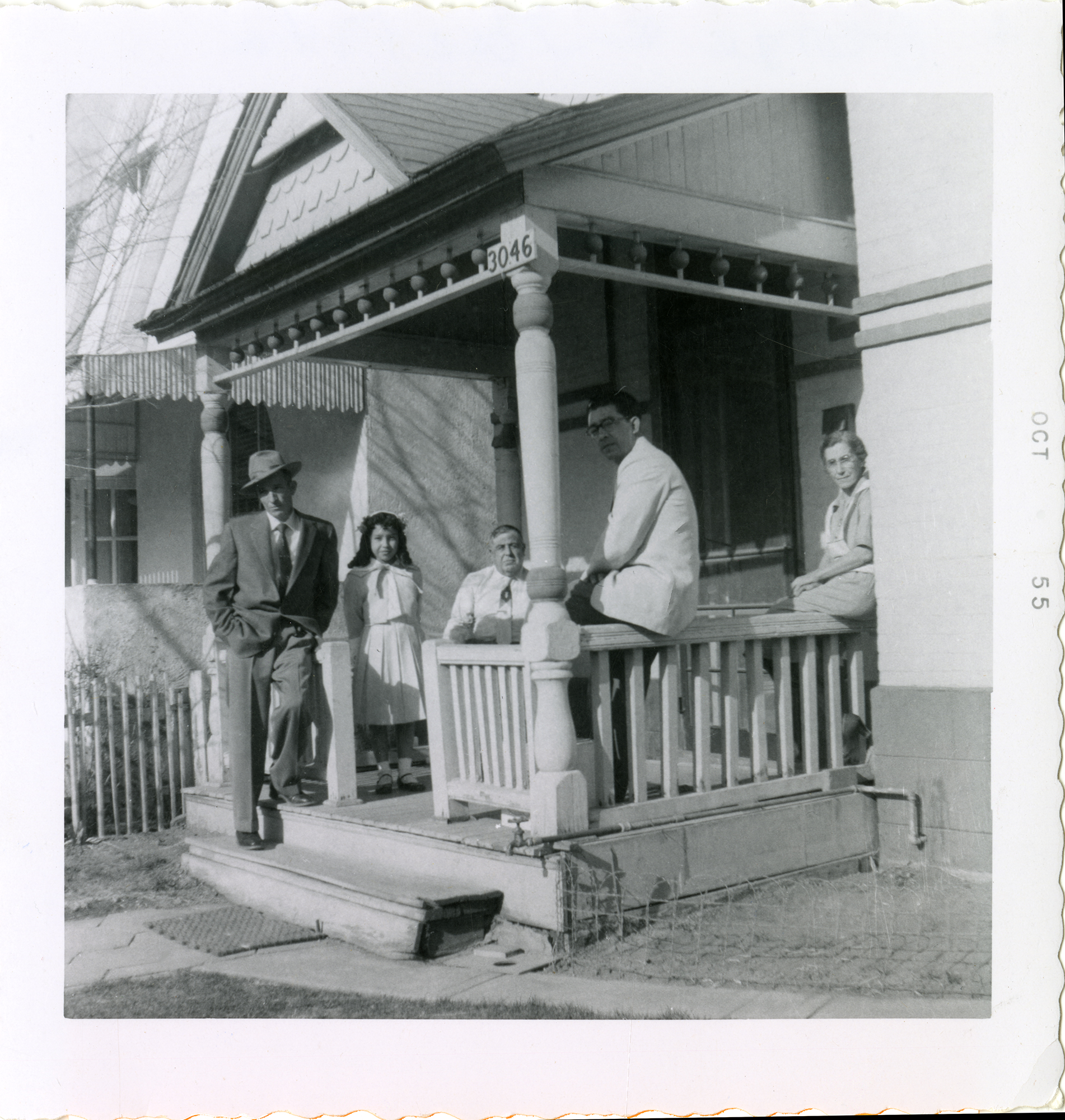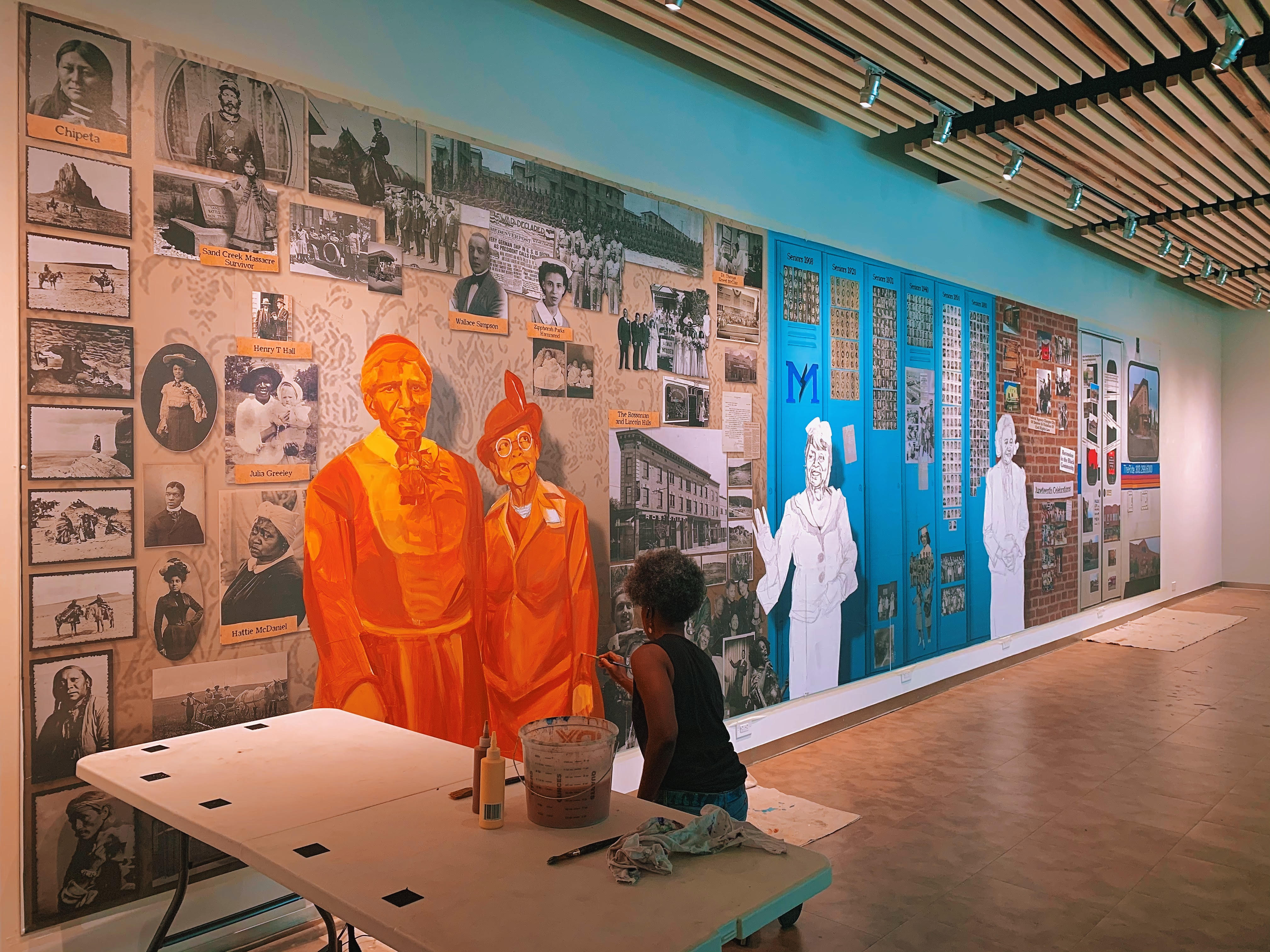
Museum of Memory
Five Points Plus Neighborhood Memory Project
Five Points Plus: Neighborhood Memory Project is a community-based public memory project where long-time resident families and friends of Denver’s Five Points shared their memories of the neighborhood with each other and History Colorado from fall 2020 to spring 2021. From the voice and perspective of community storytellers, the project explores the history of diversity, music, and self-sufficiency in Five Points, a neighborhood shaped by racism and segregation in the 20th century and that is facing reshaping due to development and displacement.
Learn more about the Exhibit recently on view at the History Colorado Center →

Members of the Lucero, Trujillo, and Gonzales families sitting and talking on a porch in the Five Points area of Denver, Colorado, undated. Shown from left to right: Salomon Trujillo (father of image donor Karen Gonzales), Nancy Gonzales, Jose Urbano Lucero (grandfather of donor), George Gonzales (father of Nancy), Josefita Lucero.
In the mid-1900’s Denver’s Five Points neighborhood was considered the historic center of Denver's black community--the "Harlem of the West"--and a flourishing neighborhood home to Japanese-American families who experienced forced relocation during WWII and to Hispanic working-class families. The neighborhood acquired its multicultural composition due to redlining and discrimination, making Five Points a predominantly Black neighborhood until the late 1990s. In the 2000s, the neighborhood became one of the fastest gentrifying areas in the country. Many of the traditional businesses and historic homes of Five Points have been replaced with high-rise apartment buildings and restaurants and cafes. These changes have attracted a new set of residents, while displacing long-time ones.
In this memory project, community storytellers explored the people, places, and community memories of this history via memory workshops, photo collecting, and a mural brainstorming session with Denver artist Adri Norris. Community storytellers shared stories of neighbors who are like family, residents who achieved significant success, the realities of segregation and integration, the impacts of racism and redlining, and the joys of community. Music, Manual High School, and self-sustainability were three themes that emerged again and again in their stories.
"I can remember coming out of a party, house party on a winter night, you can see the fog [Laughter] or the mist coming from your head because we come out sweating. That's how much we used to dance and love it. And we would walk all over the city to do just that., You know, we would walk from Five Points, even all the way up to the Crest theater, just to go see a movie, then go to a house party, then walk back. City Park, all those areas, was all tied to the community of what we called North Side or North Denver at the time. And that's how we did, but funk music was the big part." --Darrick Brown
Five Points Plus Mural
The project and a related exhibit were developed in partnership with the Black American West Museum and Heritage Center along with community members, and supported by the Blair-Caldwell African American Research Library (Denver Public Library) and Manual Highschool.
“The name came from the trolleys stopping at the intersection of Twenty-seventh Street and Welton Street, Twenty-sixth Avenue and Washington Street. There are five corners at that intersection and the trolley stopped there in the 1890s. And instead of putting the name of the streets on the marquee, they put ‘Five Points' and the name stuck.” --Terry Gentry
"But my personal memory of the Five Points area, once again, I grew up in Lawrence, Kansas, but my father would tell me about, during the Depression, when he would catch a train, and when I say “he caught a train,” I mean, he caught a train. But at any rate, he made his way to Denver. And naturally, the first place he went to was Five Points. And man, he would tell us those stories about standing outside of the Rossonian watching all of those well-known performers. And he was…’ - he just had great stories of that." --Steve Shepard.
Interactive Map
While the Five Points Museum of Memory Exhibit was open, we asked guests to share their stories and memories on a map of Five Points within the exhibit. Utilizing Historypin, we have combined the stories shared in the Five Points Museum of Memory Exhibit with the memories shared in our community workshops. Historypin is a digital version of our in-exhibit interactive where guests could write their memories on a sheet of paper, and then pin their response to a map illustrating Five Points and its surrounding neighborhoods. Our staff has photographed and transcribed these responses so that these memories can be further memorialized on this online map. Please join our communities and share your own memories, photos, and stories by clicking this link to navigate to HistoryPin and following these instructions where we detail how to easily create your own pin.
If you have memories of living and working in Five Points, please join in the creation of an interactive map that reflects the places that made the neighborhood feel like home!






